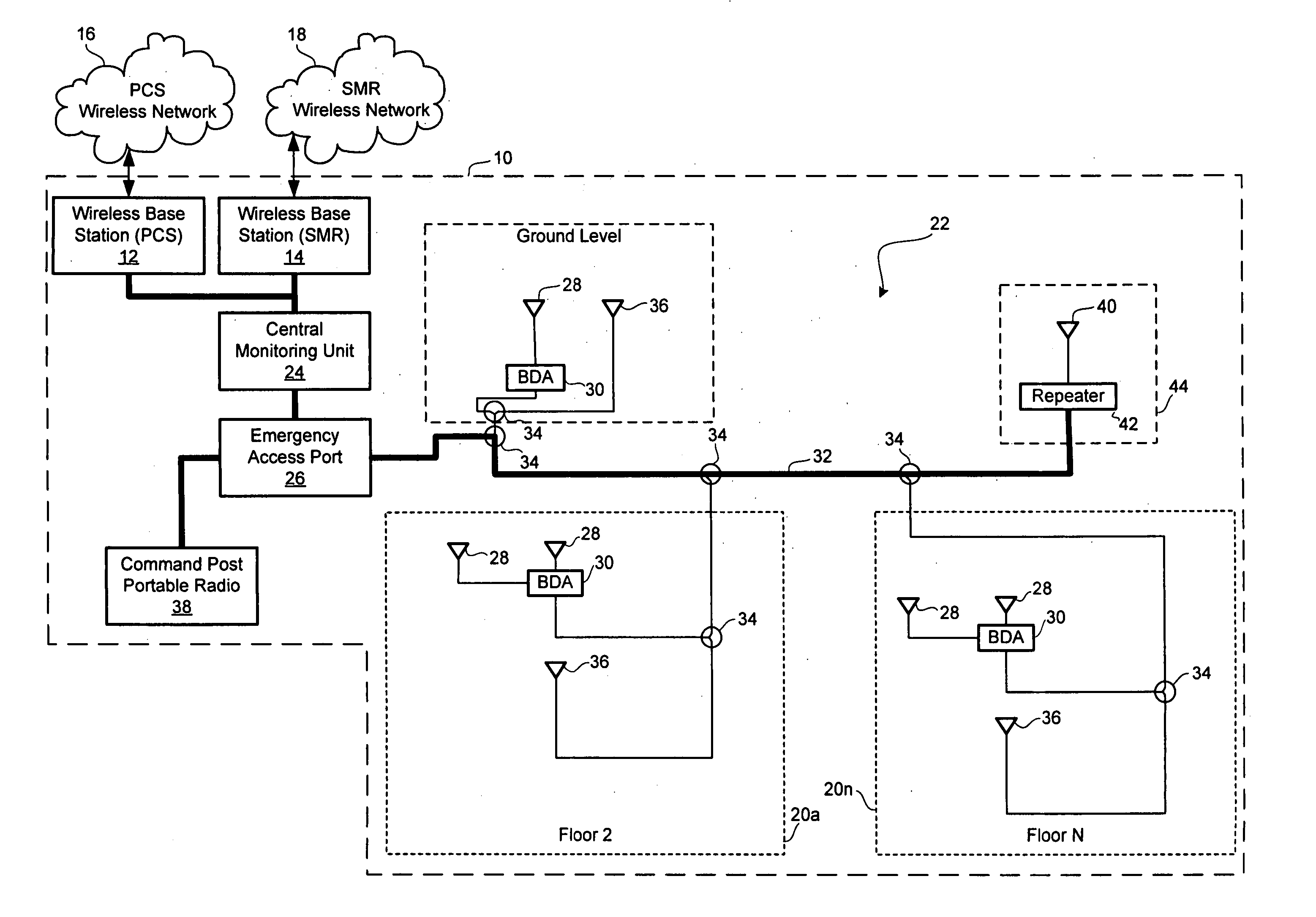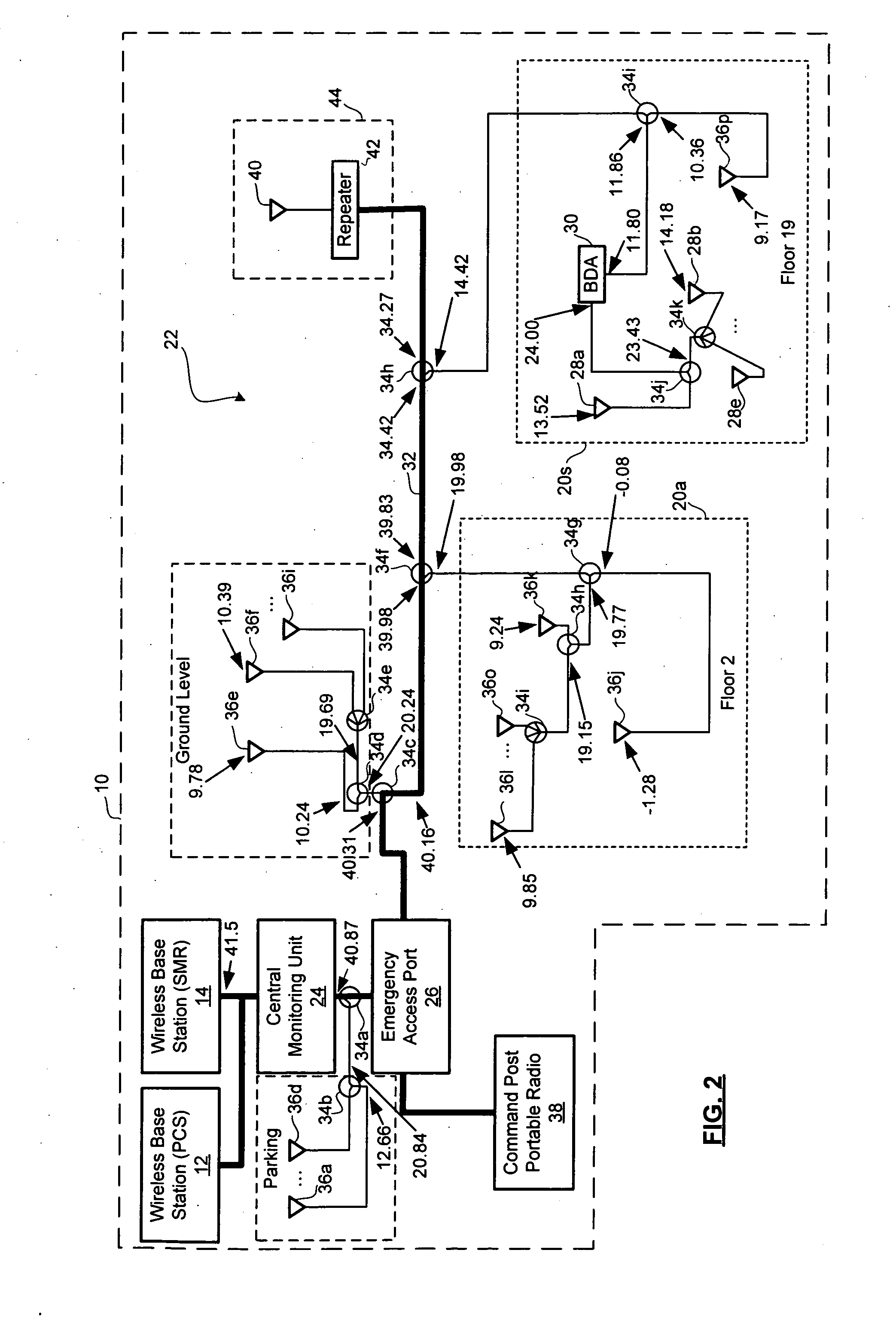In-building wireless enhancement system for high-rise with emergency backup mode of operation
a wireless enhancement and high-rise technology, applied in the field of distributed antenna systems, can solve the problems of system failure, useless system, and only effective simplex operation, and achieve the effect of enhancing in-building wireless communications
- Summary
- Abstract
- Description
- Claims
- Application Information
AI Technical Summary
Problems solved by technology
Method used
Image
Examples
Embodiment Construction
[0015] Referring to FIG. 1, a block diagram is shown of a system for providing communications to a facility 10 in accordance with one example of the present invention. The facility 10 has one or more wireless base stations, indicated by numerals 12 and 14, which are respectively coupled to wireless networks 16 and 18. The wireless networks 16 and 18 may be cellular networks, PCS networks, SMR band networks, paging networks, or other wireless communication networks for interfacing with mobile devices. The wireless networks 16 and 18 may operate using AMPS, DAMPS, NADC, CDMA, TDMA, GSM, iDEN or other modulation protocols. In one example, the wireless network 16 is a PCS network and the wireless base station 12 handles PCS signals while the wireless network 18 is a specialized mobile radio (SMR) network and the base station 14 handles SMR signals. Alternatively, in small facilities, the connection to the external networks 16 and 18 may be via repeaters to external base stations rather ...
PUM
 Login to View More
Login to View More Abstract
Description
Claims
Application Information
 Login to View More
Login to View More - R&D
- Intellectual Property
- Life Sciences
- Materials
- Tech Scout
- Unparalleled Data Quality
- Higher Quality Content
- 60% Fewer Hallucinations
Browse by: Latest US Patents, China's latest patents, Technical Efficacy Thesaurus, Application Domain, Technology Topic, Popular Technical Reports.
© 2025 PatSnap. All rights reserved.Legal|Privacy policy|Modern Slavery Act Transparency Statement|Sitemap|About US| Contact US: help@patsnap.com



